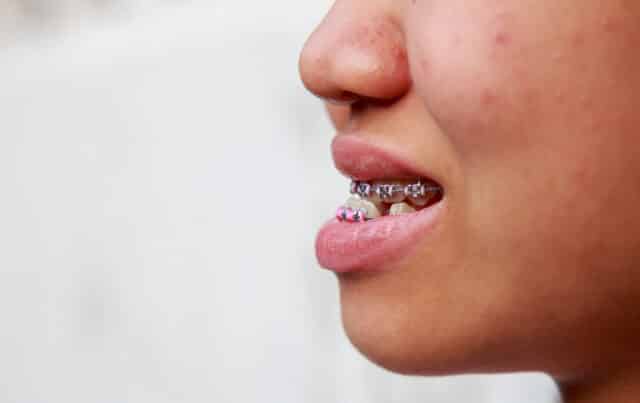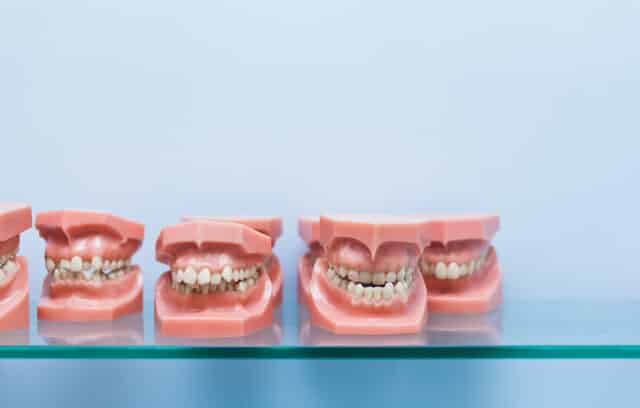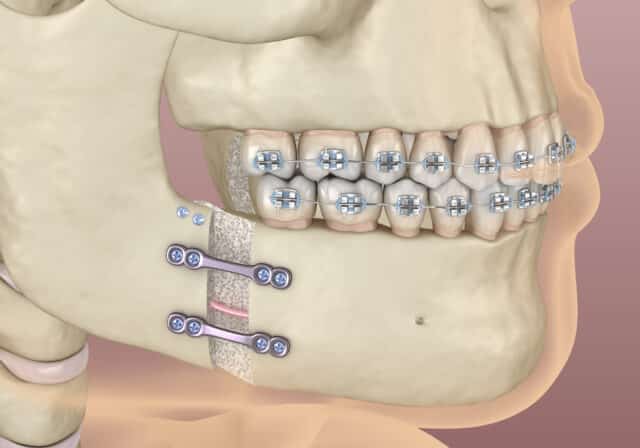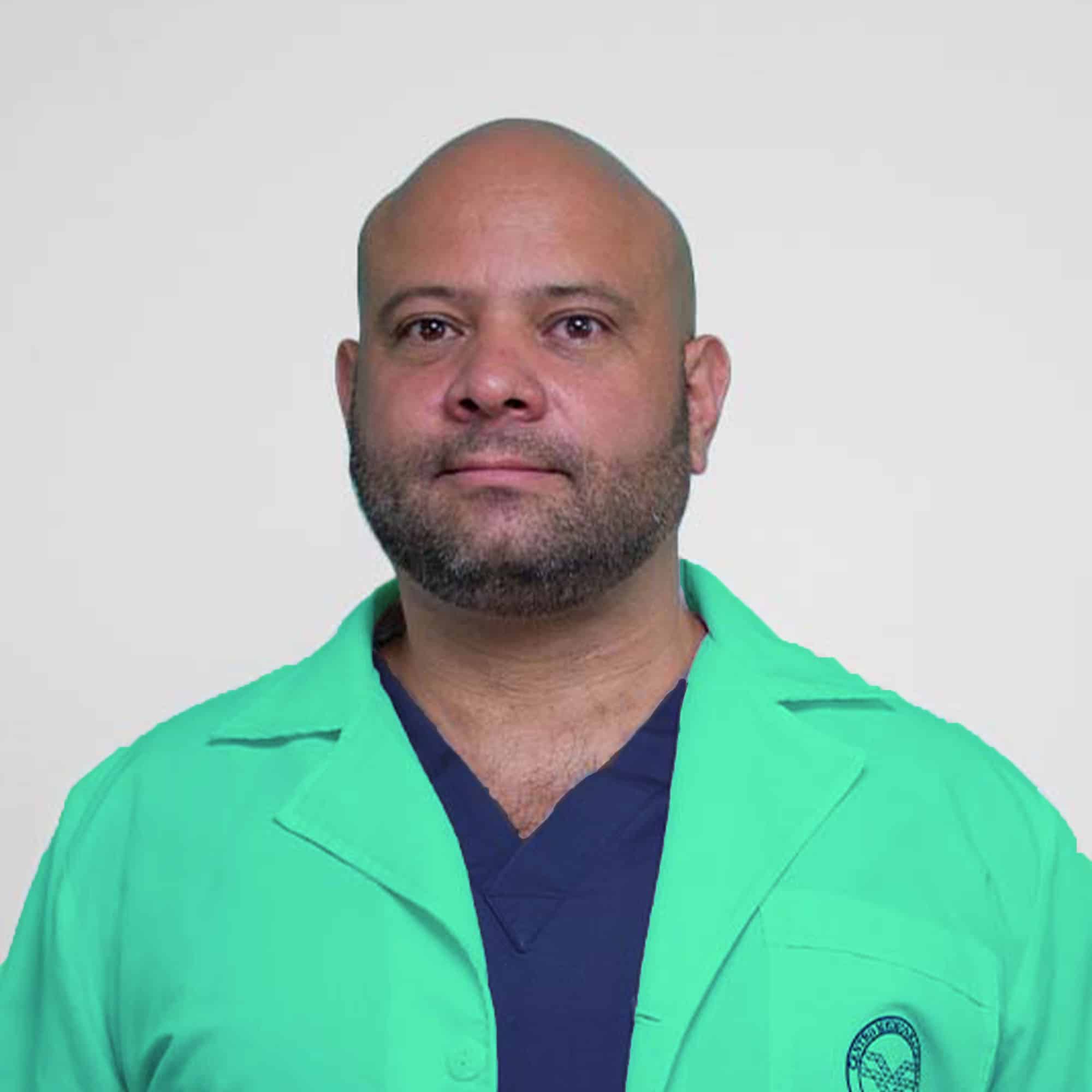Jaw Surgery or Orthognathic Surgery: the treatment step by step
Orthognathic surgery restores facial harmony when the patient does not have a correct relationship between his or her teeth and facial bones.
Sometimes, both the maxilla and the mandible are too large, too small or do not have the right shape.
This leads to:
- Malocclusions
- Problems in the alignment
- Or position of the teeth.
Affecting not only the aesthetics but also the functionality of the bite.
If this is your case and you need to undergo this procedure we explain step by step what it consists of and how it is performed.
What is jaw surgery?
Orthognathic surgery is the technique performed by a maxillofacial surgeon to correct dentofacial imbalances.
That is, deformities that affect a person’s teeth and face.
As we have previously explained, these imbalances are caused by an erroneous growth of one or more of the bones.
This bones form the face and can be either due to:
- Excess
- Or defect

The objective of the intervention is, therefore, to place the bones of the face in the correct position and size.
Jaw surgery has a double mission:
- To optimize the functionality of the bony bases.
- To facilitate everyday actions (speaking, chewing, smiling, swallowing or breathing)
- To avoid both tooth loss and head or neck pain.
- On the other hand, the intervention restores the harmony of the face through:
- A major facial change that, at least in most cases, significantly improves the aesthetics of the person.
When we perform a jaw surgery?
Before detailing the steps involved in the operation, it is important to emphasize that this technique is not always necessary.
-
In adults
We perform this jaw maxillofacial surgery on adults who:
- Have not corrected their malocclusion during their growing years.
-
In childhood
It is possible to solve any bite problem.
Whether of origin:
- Dental
- Or skeletal
This without resorting to any operation.
This is possible thanks to interceptive orthodontics.
Based on appliances that guide the growth of the bones, making the face and bite harmonious.
It is from the age of 11 or 12 when it is no longer possible to intervene directly on the bony structures of the face.
What problems does maxillofacial surgery correct?
We perform orthognathic surgery on adult patients:
- When we cannot correct the jaw alteration by orthodontics alone.
In addition, the decision to perform surgery or not depends on the patient’s:
- Expectations
- Symptomatology.
That is, if the patient has:
- A complex or a severe self-esteem problem
- Is in pain
- Breathes badly
- Snores
- Or has problems when chewing
The bite problems that are corrected thanks to orthognathic or jaw surgery are:
Class II or retrognathia.
Patients with retrognathia have the mandible set back in relation to the upper jaw.
Although it is possible that it can lead to speech and chewing problems, there are cases in which surgery is performed for cosmetic reasons.
This problem is corrected by advancing the mandible.
Class III or prognathism
It is solved by the advancement of the maxilla or the backward movement of the jaw.
Since the patient with class III or prognathism is characterized by having the jaw forward.
Prognathism is the occlusion problem that is most often operated.
All this on out of necessity or due to the existence of: pathologies (pain, loss of teeth…).

Asymmetries
It is one of the clearest imbalances at first sight.
The person with an asymmetrical face is characterized by an imbalance between the right and left side of the face.
Open bite
Patients with an open bite present a:
- Lack of contact between the upper and lower front teeth.
It is corrected by mobilization of both jaws.
This malocclusion leads to diction and chewing problems and can even cause tooth loss.
Since there is no contact between the front teeth, all the pressure of the chewing load is borne by the rear teeth, which contributes to their wear.

Crossbite
This type of malocclusion causes the teeth, usually the front teeth, not to make contact.
That is to say, in spite of having the mouth closed, the patient presents a very visible space.
Gummy smile
We speak of a gummy smile when:
- At smiling, the person shows too much gum compared to the teeth.
This makes the smile less esthetic, as there is no balance and harmony.
1. Diagnosis and planning
Before undertaking orthognathic or jaw surgery, it is essential to plan the case in advance.
This treatment consists of two parts:
- Orthodontics
- The operation itself.
This is why the joint participation of both professionals is essential:
- An orthodontist
- A maxillofacial surgeon.
Both the planning and the protocol in preparing the patient for the day of the jaw surgery can make the difference between a successful case and an unsuccessful one.
Each professional has his or her role in dealing with this type of case. Although the initial planning is the task of the orthodontist.
This person is, therefore, responsible for ensuring that the patient arrives in optimum condition for orthognathic maxillofacial surgery.
Combined orthodontic treatment, why is it necessary?
This is because the planning for maxillofacial surgery begins with a year-long orthodontic treatment.
The purpose of this orthodontic treatment is to bring the teeth into proper position with respect to their bony bases.
In this pre-surgical orthodontic treatment, the teeth are prepared for the sutures and are:
- Aligned
- Leveled
- And in good relation to the bone.
At this point, it is important to remember the differences between orthodontics and orthognathic surgery.
The former acts on the teeth aims to correct crowding and align them. The latter acts on the bones.
Therefore, the purpose of maxillofacial surgery is:
- To improve the occlusion (bite) of the mouth and the harmony of a face with inadequate proportions due to the abnormal growth of some of its bones.
Because these bones (maxilla and mandible) have developed irregularly, the teeth have been adapting to them, so they are not well aligned.
Therefore, when orthognathic surgery is performed and the bone is established in the correct position and size, the teeth will not fit.
Likewise, it is essential to emphasize that an intervention of this type implies important changes in the bone structure of the face.
Since the changes are reflected in the final appearance of the patient’s face, it is essential for the orthodontist to carry out a thorough facial study.
In this way, the person who undergoes oral surgery can achieve a:
- Functional
- Health
- And aesthetic improvement.
To perform this analysis, the dentist will rely on a radiological study.
As well as photographs and models of the patient’s teeth.
Once the material has been obtained, the dentist will make the appropriate measurements and calculations.
This measurments will be presented to the maxillofacial surgeon on the day of the surgery.

Is any type of orthodontics suitable?
The truth is that it is generally more advisable to opt for a fixed and vestibular orthodontic system -placed on the outside of the teeth-.
We are talking about traditional metal brackets.
Although it depends on the case and the surgeon who is going to perform the operation.
Nowadays, in many cases orthodontic-surgical treatment has begun to be carried out with:
- Transparent splints – aligners –
- Or lingual brackets -placed on the inner side of the teeth-.
We cannot perform these treatments in all cases.
Since there are times when maxillary compression is very severe and the surgeon asks for vestibular brackets.
The surgery lasts four hours and is performed through intraoral incisions that leave no visible scars.
2. Steps prior to jaw surgery
As mentioned above, the initial joint planning is done prior to orthodontic treatment.
The second appointment between the orthodontist and the surgeon takes place one year later.
At this time the patient has completed pre-surgical orthodontics.
At that time:
- We evaluate the dental roots
- The position of the teeth
- And if any movement is still needed for the correct surgical cuts to be made.
Once the specialists are satisfied, the surgical splints are made.
This will serve as a guide for the surgeon to perform the intervention.
For this purpose, we carry out a 3D planning in which the bones, their size and the relationship with the soft tissues can be appreciated.
Thanks to this recreation, the professionals determine how much and where the bone structures are to be moved.
3. Orthognathic maxillofacial surgery
On the day of the jaw maxillofacial surgery:
- The dentist must be present and the doctor will interpret the measurements presented by the orthodontist.
- In this way, he/she will be able to apply them to the bones and thus perform the intervention.
- The operation will last approximately four hours.
- Is performed under general anesthesia in a hospital environment.
- To act on the maxilla, mandible or both, the surgeon makes cuts and movements in the bones.
- All this, through intraoral incisions that leave no visible scars.
- Once the maxillary bones have been placed in a harmonic position and size, they will be fixed in the new place. By means of:
- Titanium mini-plates
- And screws.
After we perform the surgery:
- The patient usually goes once a week for a check-up with the surgeon and the orthodontist.
- At these appointments, the professionals assess:
- The patient’s condition
- The state of the gums
- Oral hygiene
- Etc.
After 4 weeks:
- The surgeon distances the appointments further
- Continues the usual monthly reviews of your orthodontic treatment.
Think long term
Although the first few days after the operation are hard, patients say it is worth it because of the significant improvement they experience for the rest of their lives.
How is the operation performed to adjust the teeth according to the bite?
The most frequently operated malocclusions due to the alteration of the bony bases are:
- Class II
- Class III
These, in turn, can have different degrees of severity or unfavorable growth.
Class II Case
There is usually a hypoplasia in the development of the mandible.
- I.E., it is shorter than it should be.
Although a priori what the patient identifies as being wrong is the maxilla. Because it is seen too far forward, in reality it is a problem of the jaw.
Therefore, what is usually done is a mandibular advancement.
Class III Case
It would be just the opposite: there is usually a maxillary hypoplasia which is often accompanied by an overgrowth of the mandible.
In most cases the operation is performed on the maxilla (maxillary advancement).
And depending on the position of the mandible, it is decided whether the mandible is also operated on.

4. Postoperative and recovery
Until the patient can lead a relatively normal life lasts approximately one month.
More specifically, the time off work lasts for a period of four weeks. Although it depends on the type of work performed by each patient.
If the person has a very active occupation that involves a certain risk or requires a lot of talking, he or she will need a longer recovery time.
Within this postoperative stage.
The first two weeks:
- Are the most complicated.
- Because the elastic fixations prevent the mouth from opening.
- For this reason, food should be liquid and should not require any type of jaw movement.
After these 15 days:
- It is possible to remove the elastics during meals.
- Progressively, mobility is recovered and new soft foods are incorporated into the diet.
From the fourth week:
- It is normal to notice a noticeable improvement and patients are recovering their normal life.
First two months:
We recommend not to practice sports.
Although recovery seems to be a long and costly process, patients do not usually feel pain.
However, it is inevitable to feel discomfort during the first weeks, mainly due to inflammation and fixations.
Once this period has passed:
The people we have treated say that the maxillofacial surgery is well worth it.
More over when you consider the remarkable improvement they experience for the rest of their lives.
DO YOU NEED ORTHOGNATHIC OR JAW SURGERY?
5. Follow-up and orthodontics
The next step once the jaw surgery has been performed and the postoperative period has passed is the continuation of orthodontic treatment for two more years.
In this post-surgery orthodontic phase:
- We set the teeth correctly
- We correct the dental inclinations
At this point, the most important thing is to:
- Achieve stability of the occlusion
- Avoid relapse.
In other words, the mouth should not return to the state it was in before the first phase of treatment began.
Generally speaking, it can be stated that the recovery of patients with class III is usually faster than that of people with class II.
Likewise, recovery in women is characterized by being slower than in men.
However, leaving aside general considerations, the stability of the results will depend on different factors such as the following:
- Hereditary
- Patient habits
- Application of the correct protocol throughout the treatment
- Collaboration between the dentist and the doctor.
- Fixation of adequate retention at the end of orthodontic treatment.
All of the above-mentioned circumstances will largely determine whether the treatment and the subsequent postoperative period have been worthwhile.
All this in order to obtain satisfactory and long-lasting results for the rest of your life.
In conclusion
It may seem at first glance that orthognathic or jaw surgery is too long a process.
And therefore creates rejection in patients at first.
However, it is essential to think in the long term and, although the first days after surgery are complicated, the results are worth it.
Jaw Surgery payment facilities in DrAW Dental
At DrAW Dental Clinic we offer our patients very flexible and attractive payment conditions:
- Financing of 100% of the treatment ask how
- Discounts for early payment
If you have further questions or wish to receive a diagnosis about your case, we advise you to contact our clinic.
Make an appointment.
Dr. Wintergerst will be able to answer all your questions.
He will explain the planning of your treatment.
Remember that it is not only a question of aesthetics, but of health. And that undergoing this surgery can change your life completely.
If you need our doctors to assess the state of your oral health, don’t let it pass you by and make an appointment.
Call us at +1 619 372 5409 🇺🇸 +52 664 590 8321 🇲🇽 , or use the contact form on our website, and ask for your first free appointment.
We will give you a complete diagnosis and an estimate without obligation.
You will be interested in » Jaw Surgery Cost and more frequently asked questions
Read Our Orthognathic Surgery Guide
At DrAW Dental Clinic we are guided by editorial guidelines that ensure the accuracy of all the information we publish. If you would like to know more about how we ensure that our content is up-to-date and properly supported, we encourage you to read our editorial commitment.
Did you find this a 5 star article?
Leave us your rating:
- About the Author
- Latest Posts
The distinguished Dr. Alberto Wintergerst Fisch is an specialist in Maxillofacial Surgery and has more than 15 years of experience in various prestigious institutions such as DrAW Clinic and Dental Glaf.
He trained as a Dental Surgeon at the National Autonomous University of Mexico, later he completed a specialty in Oral and Maxillofacial Surgery at the same institution and a Master’s Degree in Health Organization Administration at La Salle University.
He is attached to the National Medical Center “20 de Noviembre” of the ISSSTE and certified by the Mexican Board of Oral and Maxillofacial Surgery.
Thanks to this, Dr. Wintergerst Fisch is recognized as one of the best specialists in Oral and Maxillofacial Surgery in Mexico City and the country.
Related Posts


